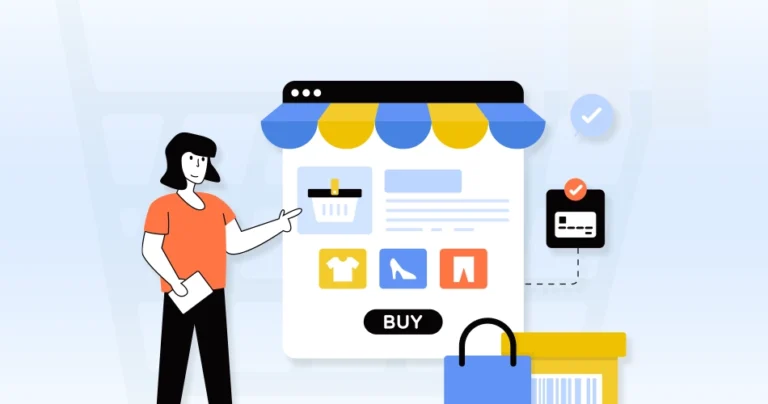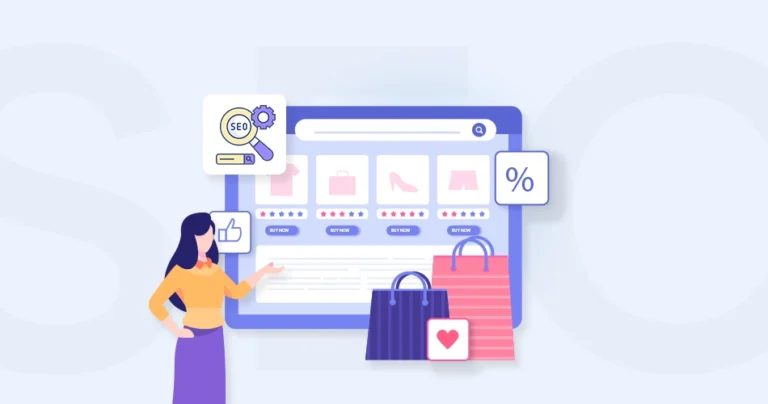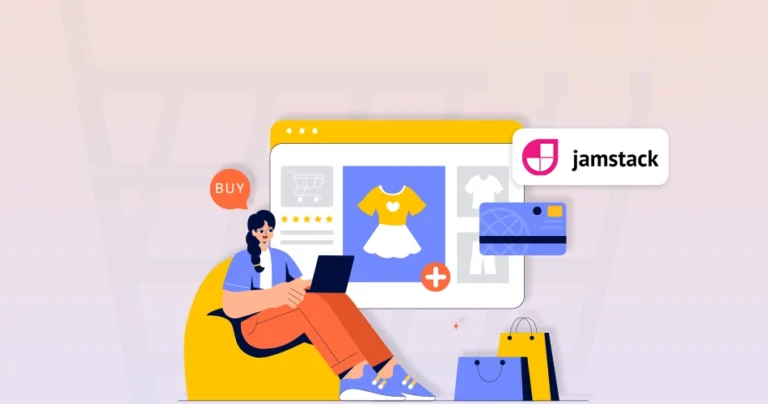Since there are millions of eStores around the world, the competition demands the best design. You need to design the eCommerce website in a way that it welcomes your customers, showcases your products, and ultimately converts browsers into buyers.
A well-designed eCommerce website will result in a positive first impression and guide users seamlessly through the shopping journey. But like anything, the design trends in the eCommerce space are evolving constantly and drastically. That means what might have worked a few years ago might not make the same impact today.
So what kind of trends do the eCommerce development services follow for the best results? Well, that’s what I will explain in this blog.
Top eCommerce Design Trends
Whether you are an eCommerce giant like Amazon or relatively new in the industry, it’s very important to stay ahead of the curve with the top trends. What are the top trends in eCommerce design? Let’s see.
Clever Page Transitions for Navigation
Cool and creative page transitions can be delightfully surprising sometimes. They can improve the user experience and keep the visitors engaged throughout their site journey. The most admired page transitions are often subtle yet interactive with a touch of gamification.
Imagine a customer clicks on a category, page, or product, and the page opens with an elegant animation or triggers a smooth parallax effect. These unexpected flourishes can leave a lasting impression and encourage users to dive deeper into your store.
Storytelling Through Product Images
High-quality product images are a must for any eCommerce store. But in 2024, we’re moving beyond simple product shots. You can use product images to tell a story, showcasing how the product can be used in everyday life. That will make the viewers think about the scenarios they can use your products, making the purchase decision much easier.
Instead of a sterile image of a pair of shoes on a white background, think about a model wearing those shoes while strolling along a scenic beach. This lifestyle approach paints a picture of how the product integrates into a particular aesthetic or activity, sparking the user’s imagination and igniting a desire to own it.
Asymmetric Layouts
Symmetrical layouts, although quite straightforward, can feel predictable and safe. Asymmetrical layouts, on the other hand, can create a sense of dynamism and visual interest. They can be used to highlight certain products, create a sense of hierarchy, and guide the user’s eye across the page.
Picture a homepage where a hero image of a new product collection takes up the majority of the left side. And the right side features a curated selection of best-selling items in a grid format. This asymmetrical approach breaks away from the expected and draws the user’s attention to both the new arrivals and established favorites.
Neuromarketing
Neuromarketing is the approach of leveraging how the human brain makes decisions. With it, eCommerce experts can design their websites in a way that subconsciously influences customer behavior. Neuromarketing strategies could involve using specific color schemes, calls to action, and more to nudge visitors towards a purchase.
For instance, research suggests that the color red can evoke feelings of urgency. So a strategic placement of “Buy Now” in red might encourage a faster conversion. However, it’s important to use neuromarketing tactics ethically and avoid being manipulative.
Augmented Reality
AR is no longer just a futuristic concept; exhibit A, Apple Vision Pro. In the coming years, we’ll see a continued rise in AR integration within eCommerce stores. Customers can virtually “try on” products or see how they would look in their own homes before making a purchase.
Imagine a furniture store where a customer can use their phone to see how a particular sofa would look in their living room. They may even adjust its position and size to ensure it perfectly complements the space. This level of interactivity builds trust and reduces the risk of purchase regret.
Minimalism & Clean Aesthetics
Minimalism continues to be a major trend in eCommerce design. Clean layouts, uncluttered product pages, and a focus on white space all contribute to a more user-friendly and visually appealing experience. This allows the products themselves to take center stage.
By minimizing distractions and clutter, you ensure that users can easily find what they’re looking for and focus on the quality and value your products offer.
Micro-interactions
Micro-interactions are small, subtle animations or interactions that can add a layer of polish and delight to the user experience. They can be used to confirm actions, provide feedback, or simply make the website feel more interactive and engaging.
Imagine a subtle animation that plays when a user adds an item to their cart, or a satisfying “like” button that changes color when clicked. These micro-interactions provide users with immediate feedback and create a more enjoyable and engaging shopping experience.
Mobile-first Design Approach
With the majority of online shopping now done on mobile devices, it’s more important than ever to ensure your eCommerce store has a mobile-first design approach. This means that your website should be easy to navigate, load quickly, and look great on all screen sizes.
Don’t just make your desktop website responsive – prioritize the mobile experience from the ground up. This ensures a seamless shopping journey for users on the go, who are increasingly likely to convert from their smartphones.
Sustainability
Sustainability is a growing concern for consumers, and eCommerce stores are taking notice. In 2024, we’ll see a rise in stores that highlight their sustainable practices, such as using eco-friendly eCommerce packaging or offering products made from recycled materials. This can resonate with environmentally conscious customers and help you stand out from the competition.
Consider featuring badges or icons that communicate your commitment to sustainability throughout your website. You can even dedicate a page to outlining your eco-friendly practices and partnerships.
If you need help with implementing these design trends in your eStore, consult with our eCommerce development company.
FAQs on eCommerce Design Trends
What kind of storytelling can I incorporate through product images?
Think about the lifestyle your products represent. Use high-quality photos that showcase the product in action, being used by real people in real-life settings. Evoke emotions and aspirations through imagery. Partner with talented photographers and stylists to create compelling visuals.
Is neuromarketing ethical?
Neuromarketing can be a powerful tool when used ethically. The goal is to influence user behavior in a positive way, by highlighting the value you offer and making the shopping journey easier. Avoid manipulative tactics and focus on creating a user-friendly experience that builds trust.
What are some tools that can help me implement these design trends?
There are many design tools available to help you create a stunning eCommerce website. Some popular options include:
– Design software: Adobe Photoshop, Figma, Sketch
– AR/VR development platforms: Unity, Xzest
– Heat mapping and analytics tools: Crazy Egg, Hotjar
Conclusion
When it comes to designing an eCommerce website, there is no one-size-fits-all answer. It’s important to stay up-to-date on the latest trends and user preferences. Some of the common ones include
- Clever Page Transitions for Navigation
- Storytelling Through Product Images
- Asymmetric Layouts
- Neuromarketing
- Augmented Reality
- Minimalism & Clean Aesthetics
- Micro-interactions
- Mobile-first Design Approach
- Sustainability
If you need help with implementing any of these trends on your eCommerce website, connect with us today!






